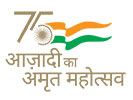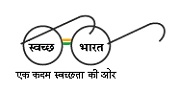Local Participation And Sustainability
The Local Participation and Sustainability Program creates awareness among the communities about the value of participation in making local institutions vibrant and improving the last-mile delivery of government programs. The program incorporates local knowledge and choices in village development plans to support inclusive and sustainable rural development; and builds the capacities of village-level institutions to identify and address community problems, monitors the maintenance of public infrastructure, and conserves natural resources for holistic village development. S M Sehgal Foundation further creates awareness about important health and sanitation issues and promotes usage of digital technologies to widen the reach and benefits of government programs to the communities.

WHY DO WE NEED LOCAL PARTICIPATION AND SUSTAINABILITY?
Members of village-level institutions are constrained by poor awareness, insufficient skills, and limited resources, and therefore struggle to lead development activities in villages. Rural women are at an added disadvantage due to wide gender gaps in education and skill development as well as limited knowledge on health and hygiene, financial insecurity, and general lack of confidence.
Local participation is critical for the success of any development program as it allows for representation along with inclusion of local knowledge and practices, leading to more equitable and sustained outcomes. Local participation enables communities to take an active lead and eventually own the development program or initiative, thus validating the effort of agencies and ensuring sustainability of the impact created.
LOCAL PARTICIPATION
The Local Participation and Sustainability Program creates awareness among the communities about the value of participation in making local institutions vibrant and to improve the last-mile delivery of government programs. The program works with communities to incorporate local knowledge and choices in villages plans to support inclusive and sustainable rural development in India, while also collaborating with the government and other agencies to provide pertinent information to rural communities and facilitate access to representatives of these agencies.


WOMEN’S LEADERSHIP
The Local Participation and Sustainability Program enables women to participate in village-level institutions and public life. The program provides women with a platform to come together, voice their concerns about community and development issues, and work collectively to address problems that affect their families and their community. Capacity-building sessions teach leadership and communication skills that build their confidence to improve last-mile delivery of government programs, take leadership roles to address development issues, and participate in gram sabha. The program further builds the capacities of women elected representatives (WERs) to collectively tackle problems of the village.
HEALTH AND HYGIENE
The Local Participation and Sustainability Program works with rural communities to promote good hygiene and sanitation in villages, improve awareness on preventive and remedial healthcare, and encourage the adoption of safe hygiene practices through behavior-change campaigns.


e-GOVERNANCE
The Local Participation and Sustainability Program integrates digital technologies to widen its reach and the benefits of government programs to the communities. The program uses digital technologies such as online platforms, toll-free helpline numbers, and e-Resource centers to ease and advance last-mile delivery of government programs. The vision of National Digital Literacy Mission (NDLM) is promoted by acquainting villagers and representatives of village-level institutions with digital devices and online services.
SUSTAINABILITY
The Local Participation and Sustainability Program plays a key role in the sustainability of all projects of S M Sehgal Foundation to further rural development in India. Sustainability is considered a dynamic and continuous process of building the capacities of communities, which begins at the early stages of project implementation and continues even after the project period completes. The program focuses on building ownership among communities by making people aware of the benefits of project interventions. This further motivates rural communities to support the project and pool their resources to maintain improvements, and enables gram panchayats to access funds and subsidized government programs to maintain the project. The objective is to ensure that the benefits of the project are sustained beyond the project period, with rural communities eventually taking ownership of development in their village.







